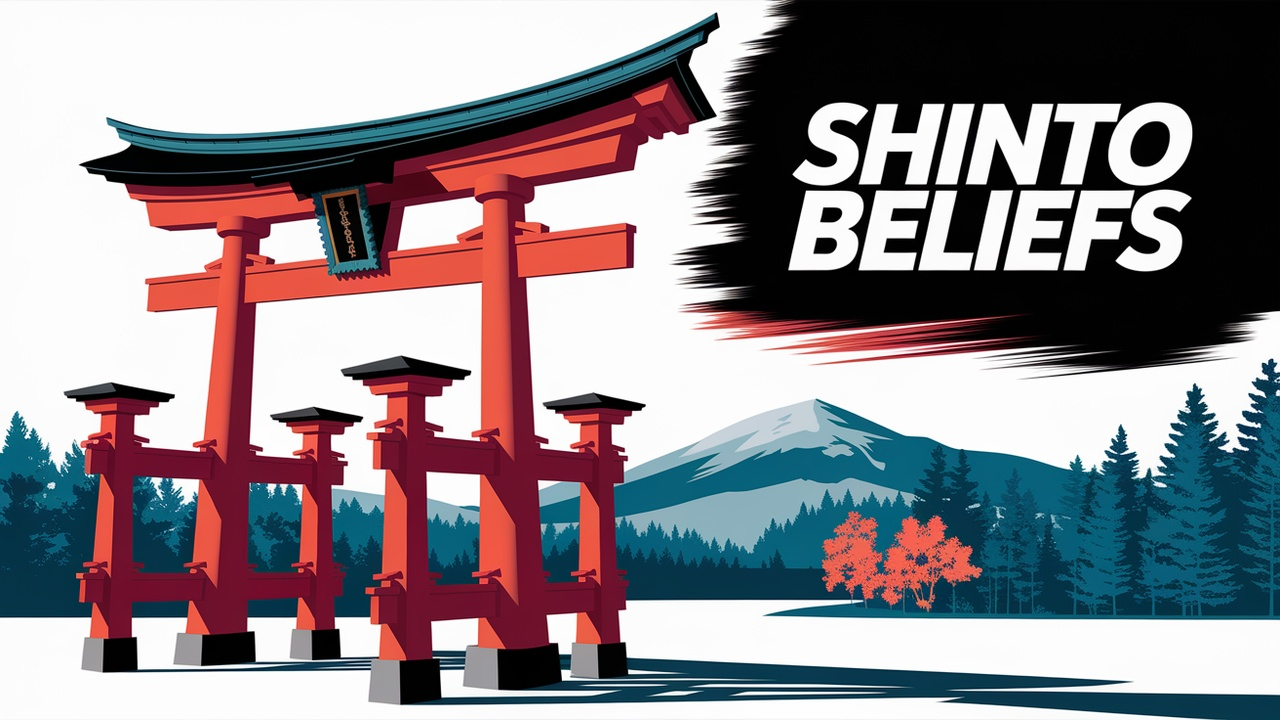
This course offers an in-depth exploration of Shinto, the indigenous spirituality of Japan. Students will examine the core beliefs, rituals, and practices that define this ancient tradition, alongside its historical development and contemporary relevance.
Course Levels
-
Level 1: Introduction to Shinto
This introductory level covers the basics of Shinto, including its origins, key concepts, and the importance of kami.
-
Level 2: Core Beliefs of Shinto
This level delves deeper into Shinto's central beliefs, including the role of nature and purification rituals.
-
Level 3: Shinto Practices and Rituals
In this level, students will explore the various practices and rituals that are integral to Shinto, including festivals and ceremonies.
-
Level 4: Shinto Shrines and Architecture
This level focuses on the physical manifestations of Shinto, particularly shrines and their architectural significance.
-
Level 5: Shinto and Society
This level examines the interaction between Shinto beliefs and Japanese society, culture, and identity.
-
Level 6: Comparative Analysis of Shinto
This level encourages a comparative approach, analyzing Shinto alongside other religious traditions.
-
Level 7: Future of Shinto
This advanced level explores the challenges and transformations facing Shinto in a modern context.
Course Topics
-
Shinto and Taoism: Comparative Perspectives
# Shinto and Taoism: Comparative Perspectives ## Introduction Shinto and Taoism are two distinct yet influential belief systems originating from Japan and China, respectively. Both religions offer un...
-
The Role of Priests (Shinshoku) in Rituals
# The Role of Priests (Shinshoku) in Rituals ## Introduction to Shinshoku In Shinto, priests, known as **Shinshoku**, play a crucial role in conducting rituals and ceremonies that are central to the...
-
What is Shinto?
# Understanding Shinto Shinto, or *Shintō* (神道), is the indigenous spirituality of Japan and is often considered a blend of ancient animistic beliefs and practices. The term Shinto translates to "the...
-
Shinto and Buddhism: Historical Interactions
# Shinto and Buddhism: Historical Interactions ## Introduction Shinto and Buddhism are two of the most significant religious traditions in Japan, each with its own beliefs and practices. Their histor...
-
Shinto in the Global Religious Landscape
# Shinto in the Global Religious Landscape ## Introduction Shinto, as the indigenous spirituality of Japan, encompasses a rich tapestry of beliefs and practices centered around kami (deities or spiri...
-
Global Influence of Shinto
# Global Influence of Shinto Shinto, the traditional religion of Japan, has significantly influenced various aspects of Japanese culture and has also spread its influence globally. This topic explore...
-
Types of Shinto Shrines (Jinja)
# Types of Shinto Shrines (Jinja) Shinto shrines, known as *Jinja* in Japanese, are integral to the Shinto belief system, serving as places of worship and connection with the kami (deities or spirits...
-
Wedding Ceremonies in Shinto
# Wedding Ceremonies in Shinto Shinto, the indigenous spirituality of Japan, encompasses a variety of practices and rituals, one of the most beautiful being the wedding ceremony. Known as **Shinto-sh...
-
Understanding Kami: Spirits and Deities
# Understanding Kami: Spirits and Deities In Shinto, the indigenous spirituality of Japan, **kami** are the spirits or deities that inhabit the natural world and human creations. The concept of kami ...
-
Rituals and Offerings to Kami
# Rituals and Offerings to Kami Shinto, the indigenous spirituality of Japan, revolves around the worship of kami, which are spirits or gods that inhabit natural elements, ancestors, and various aspe...
-
Contemporary Issues in Shinto Practice
# Contemporary Issues in Shinto Practice Shinto, as one of the indigenous religions of Japan, has shaped and been shaped by the social, political, and environmental contexts of contemporary society. ...
-
Historical Overview of Shinto
# Historical Overview of Shinto Shinto, often regarded as Japan's indigenous spirituality, has a rich and complex historical journey that reflects the cultural evolution of Japan itself. This overvie...
-
Sacred Spaces: The Role of Nature in Shrine Layout
# Sacred Spaces: The Role of Nature in Shrine Layout ## Introduction In Shinto, the connection between nature and spirituality is paramount. Shrines are not just man-made structures; they are designe...
-
Shinto and National Identity
# Shinto and National Identity Shinto, the indigenous spirituality of Japan, plays a crucial role in shaping the national identity of the Japanese people. This relationship between Shinto and nationa...
-
Youth Engagement with Shinto
# Youth Engagement with Shinto ## Introduction Youth engagement in Shinto is an evolving phenomenon that reflects the changing dynamics of Japanese society. As cultural and religious practices adapt ...
-
Purification (Harae) and Its Significance
# Purification (Harae) and Its Significance in Shinto In Shinto, purification, known as **Harae**, is a fundamental practice that embodies the belief in maintaining spiritual cleanliness. It is a mea...
-
Environmental Issues and Shinto Perspectives
# Environmental Issues and Shinto Perspectives ## Introduction Shinto, the indigenous spirituality of Japan, emphasizes a profound connection between humans and nature. This relationship is grounded ...
-
Shinto in Modern Japan: A Cultural Perspective
# Shinto in Modern Japan: A Cultural Perspective Shinto, as the indigenous spirituality of Japan, plays a significant role in shaping the cultural landscape of modern Japan. This topic explores the r...
-
Seasonal Festivals (Matsuri) and Their Importance
# Seasonal Festivals (Matsuri) and Their Importance Matsuri, or seasonal festivals, are vital components of Shinto practices, deeply intertwined with the cultural and spiritual fabric of Japan. These...
-
The Role of Technology in Shinto Practice
# The Role of Technology in Shinto Practice ## Introduction In the 21st century, technology has permeated every aspect of life, including religious practices. Shinto, as a traditional Japanese religi...
- And 15 more topics...